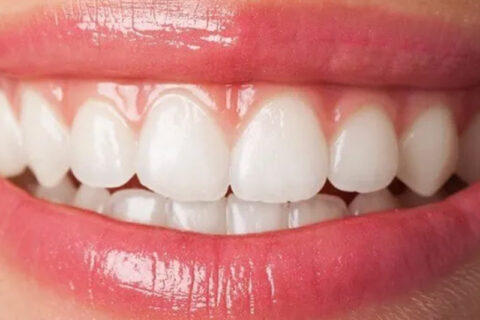My Teeth Are Stained – What Are My Options?
Ashburn Dentist Discusses Teeth Whitening Solutions
There are basically two types of tooth staining or discoloration: external, which affects teeth from the outside; and internal, staining built into the tooth itself. If you are concerned about tooth stains in Ashburn, our Ashburn dentist, Loudoun Family Dental, is well equipped to help determine a positive course of action to improve your smile.

Extrinsic staining occurs because the tiny pits, fissures and defects in the outer surface of tooth enamel are susceptible to the accumulation of stain-producing substances. These substances arise from a variety of sources: certain foods and beverages — particularly, red wine and tea with high tannin content, any form of tobacco, some types of oral bacteria, and topical medications. Any of these can be intensified by the accumulation of dental bacterial plaque, a result of inadequate oral hygiene.
Since saliva plays a major role in the physical removal of food debris from tooth surfaces, diminished salivary output may contribute to extrinsic discoloration. Diminished output that may lead to mouth dryness can arise from several causes such as salivary gland obstructions, chemotherapy, radiation treatments for cancer and multiple medications.
Intrinsic dental stains may arise from certain dental filling materials, next to adjacent tooth structure or the condition of the tooth itself. For example, if the tooth is largely replaced by filling material, or if it has had a root canal filling, it may have a different color than the adjacent teeth.
Treatment options include:
- Diet and habit modification — develop a strategy for either modifying or eliminating habits — like tobacco use or the consumption of certain foods — that cause or contribute to staining.
- Effective twice daily oral hygiene — the use of an appropriate toothpaste helps to prevent extrinsic staining. Most toothpastes help with this because they contain an abrasive, a detergent, and an anti-tartar agent — and many now contain tooth-whitening agents.
- Professional tooth cleaning and polishing — Some extrinsic stains may be removed with ultrasonic cleaning, followed by polishing with an abrasive prophylactic paste or an air-jet technique with an abrasive powder. This “micro-abrasion” may occasionally be used with bleaching.
- Fillings and Restorations — teeth discolored by dental caries (decay) or dental materials require the removal of the decay or restorative materials, followed by proper restoration of the tooth. The junction between filling (restorative) materials replacing lost tooth structure and the adjacent healthy tooth is very important. Even with well-placed and properly handled materials, the junction is still subject to plaque accumulation and therefore staining.
- Bleaching (tooth whitening) — this technique is a safe and relatively easy way to brighten stained teeth, and is used to treat many types of tooth discoloration. Bleaching includes two general types of techniques: vital, which is performed on “vital” teeth, i.e. the nerves are living and the discoloration is usually extrinsic; and non-vital, typically used to treat discolored teeth associated with root canal treatment. While vital techniques can be performed in-office or at home, non-vital whitening is strictly performed as an in-office professional procedure.
If you are interested in teeth whitening in Ashburn, VA, we invite you to contact ustoday to learn more about your teeth whitening options.

